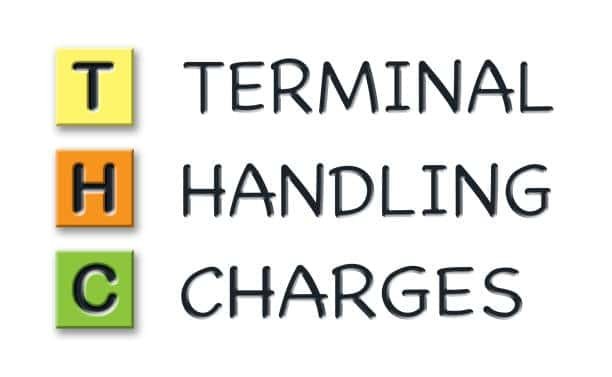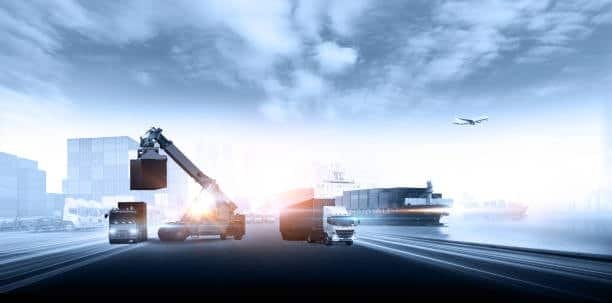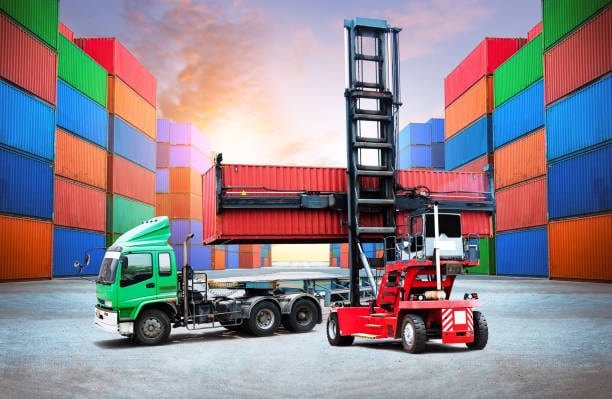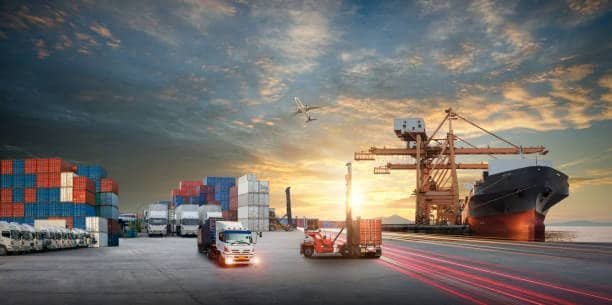The way fees are structured in shipping often confuses seasoned importers and exporters. Among all these costs, investors and businesses may find Terminal Handling Charges (THC), or terminal handling charge, to have one of the biggest impacts and yet least clarity. Global traders must be aware of THC meaning, because these fees are an important part of the total charges for moving goods internationally.
What Does THC Stand For in Shipping Terms

The initials THC in shipping stand for Terminal Handling Charges, also referred to as terminal handling fees . These costs are collected by shipping lines or terminal operators to cover the work done with containers at the port. At the terminal, THC deals with loading, unloading, stacking and basic handling tasks for containers. The price for handling at the port applies to imports and exports alike and can change a lot based on the port, the shipping service and the chosen assistance.
Terminal Handling Charges help shipping companies cover the costs they face while moving, loading or unloading containers. Terminal handling charges (THC) are needed for landside terminal operations at ports and are therefore part of the total cost calculation, unlike ocean freight rates.
Origin Terminal Handling Charges Explained

Origin Terminal Handling Charges (OTHC) are payments made at the place of departure. Handling of export containers at the destination port starts at the arrival of the container at the terminal and continues until it is placed onto the vessel. THC begins at the origin by receiving goods in containers, processing documents, assisting with customs clearance and moving goods onto the vessel.
Exporters often notice OTHC in their quotes from shipping companies and these fees are normally handled by the shipping company or their agents. The amount depends on how many containers are being used, what types of goods are in them and what’s required at the particular port. Many terminals give discounts to regular or high-volume shippers and it is essential for exporters to discuss and agree on freight charges and these rates when setting up a regular shipping contract.
Destination Terminal Handling Charges Overview
At the import destination, containers are charged the Destination Terminal Handling Charges (DTHC), also known as Discharge Handling Charge (DHC). The charges, or thc charged, are meant for discharging containers from ships, placing them in the terminal and organizing their distribution to recipients or agents. Issuing the necessary documents and helping clients through customs procedures are included in DTHC.
To calculate terminal handling charges, destination THC must be factored into importers’ calculations of landed costs. Before releasing a container, trade agents need to pay these charges, so they are very important in organizing the cash flow for international trade. Some ports provide express services for an extra cost which helps importers get their cargo cleared and delivered faster.
Factors Affecting THC Rates in Global Shipping
Different ports and shipping lines experience different THC rates because of multiple factors. The main factor at shipping terminals is the size of the container and usually 20-foot containers are cheaper to use than 40-foot or 45-foot containers. The condition and performance of shipping ports also affect THC rates and modern, self-operating terminal systems are usually more expensive to use.
The port where the ship is parked greatly affects THC, because handling charges could be much less at developing ports compared to top international hubs. How much it costs to employ workers, the state of the equipment and the terms of operation at the port facilities also play a part in setting rates. High shipping seasons generally mean that THC will increase because there are more trucks on the road and not enough resources at the terminals.
THC vs Other Shipping Charges and Fees

There is a big difference between Terminal Handling Charges and freight rates, fuel charges and documentation fees. Although freight rates take care of moving cargo by sea, THC is designed to handle how goods are handled once at the terminals. Documentation fees pay for processing paperwork, fuel surcharges cover changes in bunker fuel expenses and THC mainly concentrates on its container handling responsibilities.
Being aware of these differences allows shippers to distribute costs properly and request better agreements from their service suppliers. Certain carriers, like a shipping line, include all shipping charges together in their prices, but some show each item cost separately. Because of this, customers are able to pinpoint causes of shipping expenses and explore other ways to save money on their shipments.
How THC is Calculated in Different Ports
Pricing THC charges can differ a lot between ports and some ports calculate based on flat per-container rates, while other ports prefer weight- or value-based charges. Many major container ports and terminal authorities provide standard transit and handling fees that are used for most shipments and special rates for some types of cargo or high-volume customers.
Port authorities and operators review rates on an annual or seasonal basis following their changes in costs and the state of the market. Sometimes, some ports and the port terminal grant discounts to regular customers, whereas occasional visitors pay full price. With local calculation skills, shippers can allocate funds correctly and see which shipping route is cheaper.
Impact of THC on Total Shipping Costs

Around 10-20% of the total cost for a normal container shipment is due to Terminal Handling Charges. When the cargo is both extremely valuable and not very heavy, and with a specific container load THC can make up a bigger part of the total transportation charges, so precise cost calculation during planning is very important. Any business that constantly ships abroad needs to account for THC in their profit margin and pricing. When THC rates suddenly change, a company’s competitiveness in overseas markets can be affected, so it is necessary for firms to keep track and adjust the way they ship goods.
THC Regulations and Industry Standards
Both international ship organizations and port authorities have set up rules for implementing and revealing THC. IMO sets guidelines for clear and objective costs and regional port associations regularly establish common rules for their member terminals. Many governments now require shipping lines to make sure THC and other charges are included in their quotes. Because of these transparency rules, shippers can perform terminal handling charges calculation, compare offerings from several providers and decide wisely. Even so, enforcement is not always the same from place to place which is why shippers should check regulations locally.
Managing and Negotiating THC with Carriers

Good THC management means knowing what carrier pricing looks like and forging partnerships with shipping companies. Truckload shippers which send out a lot of cargo often arrange annual agreements with good THC rates, but smaller traders may get better rates by pooling their goods with forwarders. Looking at current rates and how the market compares often lets shippers discover lower-cost choices. Some carriers give rewards or offer advantages to people who keep cannabis in their vehicles which can take THC out more gradually. Clear communication about storage between you and carrier reps guarantees you get informed about rate changes and new deals as soon as they occur.
Common THC Disputes and How to Avoid Them
Many THC disputes happen because the terms in the agreement are not clear, unexpected rate updates are introduced or one party believes the services do not meet their expectations. Typical problems include when an invoice is different from the quote, unexpected expenses for services you did not ask for and slow delivery that ends up being costly. Contract review, noting down details of your services and constant communication about fees charged will help avoid future conflicts. Setting up dispute resolution steps in advance can help solve conflicts rapidly once they arise. A lot of successful shippers keep close track of their THC charges so they can note trends and negotiate better deals when contracts are up for renewal.
THC Variations Across Major Shipping Routes
Across the world’s major shipping routes, the Terminal Handling Charges differ a lot and trans-Pacific ways usually show a different pricing system from trans-Atlantic or Asia-Europe routing. These kinds of changes happen because of port congestion, freight terminals how well the ports are built and how competitive the shipping industry is. Thinking about route-specific THC levels steers shippers to make wiser decisions about supply chain management and routing same port. Sometimes, lower THC also means elevated freight rates, while other routes may have both higher THC and lower freight. Examining every cost factor in the bill will allow you to make the right route choice for specific items and insurance needs.
Digital Tools for THC Management and Tracking
These platforms now make it much easier to watch and oversee the delivery of THC using different routes and companies. The systems help with real-time comparing of rates, automatic invoice checking and predicting ways to cut expenses port facility security
. Digital approaches enable firms to reduce their expenses, track how their carriers behave and manage office operations smoothly. Because it links with enterprise resource planning systems, Geller can handle budgeting and produce reports smoothly. Since the shipping industry is becoming more digital, these tools play a bigger role in supporting companies’ competitiveness.
Future Trends in Terminal Handling Charges
Changes in technology, environmental laws and world trade are affecting the structure of the shipping sector. Automating tasks at ports may create more set features for how handling is managed and could reduce costs, yet complying with the environment may introduce different charges freight forwarder. Through using blockchain and digital documentation systems, officials at borders can manage these operations efficiently and with less administrative work. Even so, building the new infrastructure needed can first make prices go up before savings come through in the long run. Shippers should follow these developments so they can adjust their strategies full container load.
Conclusion
A major part of the costs involved in international shipping is Terminal Handling Charges, so it needs to be managed and well-grasped. Fees for handling containers at the ports are important and add to the total shipping expenses and the effectiveness of the supply chain. Managing THC takes understanding rate policies, having productive relationships with carriers and planning schedules based on what the business wants to achieve.


